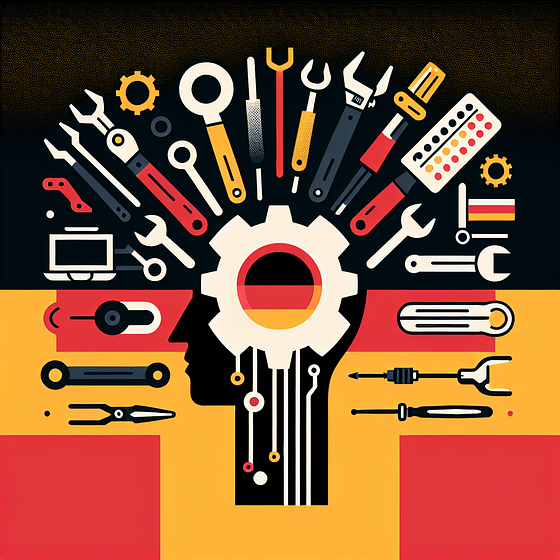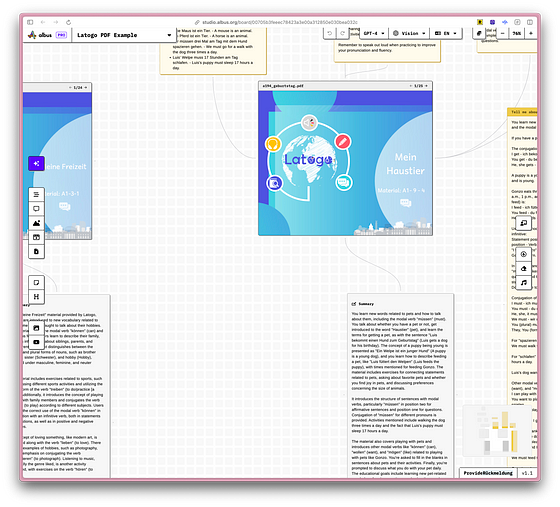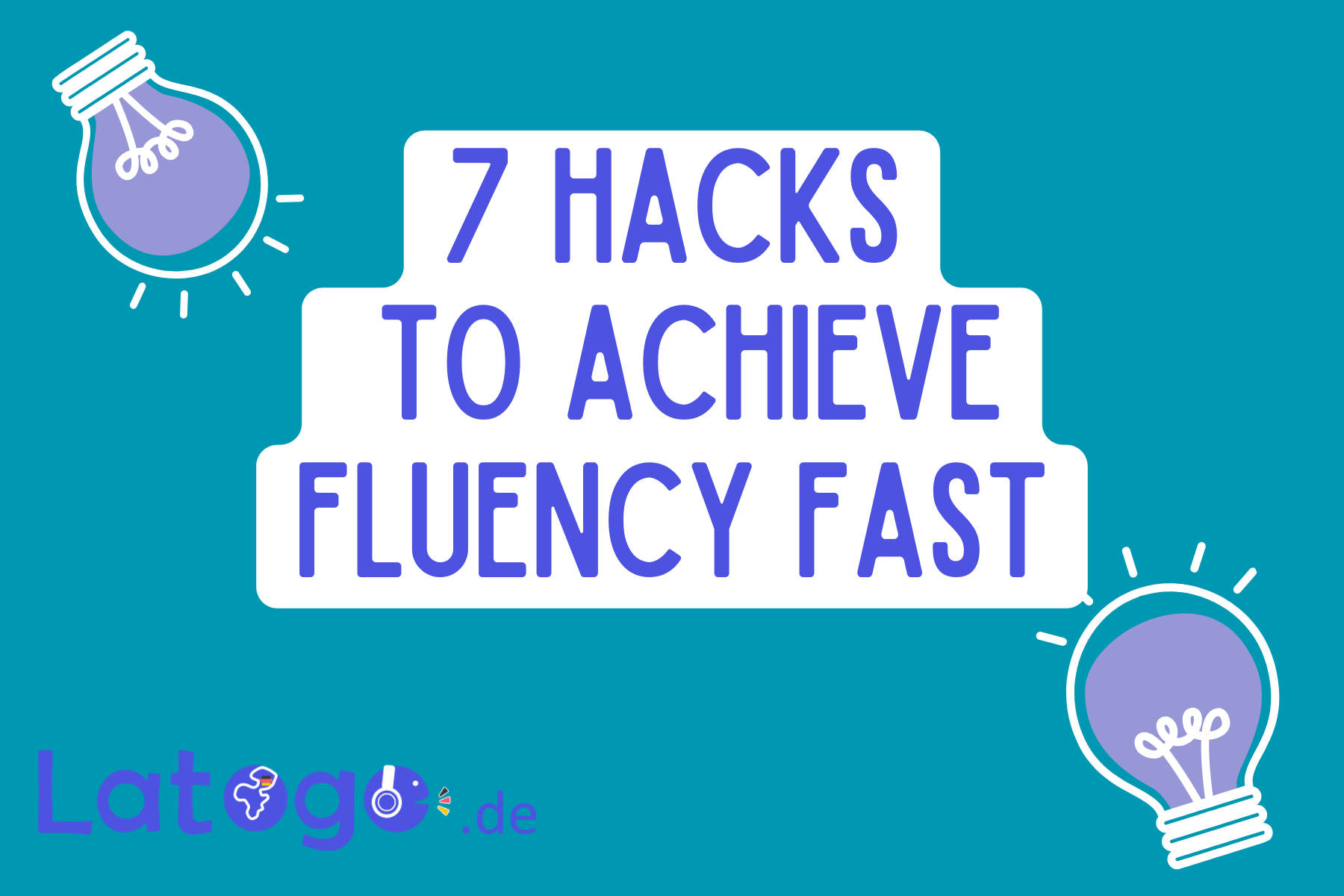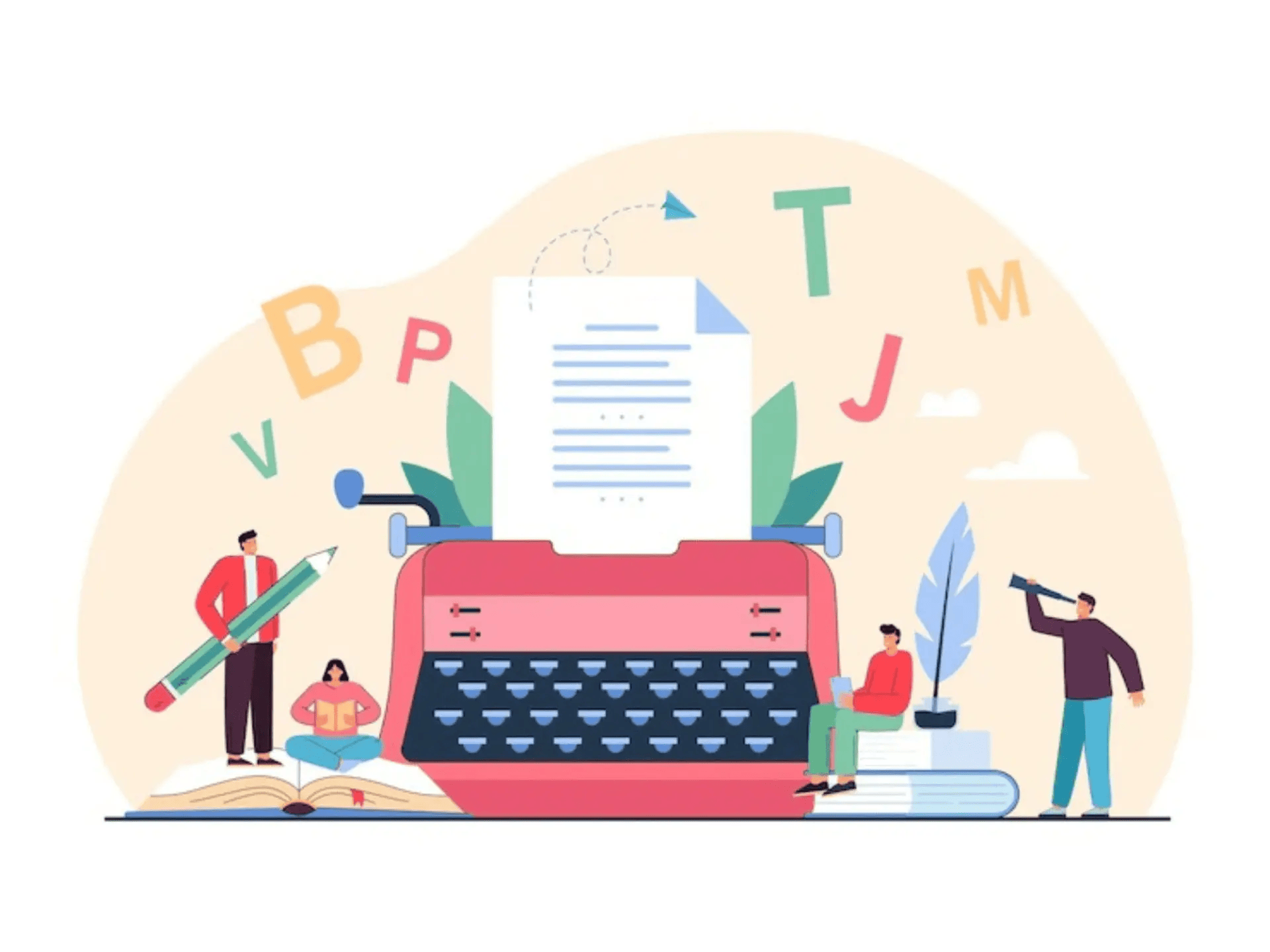7 Genius AI Hacks for German Learners to Boost Skills and Confidence in Record Time
As a busy professional with a passion for adventure and travel, you understand the importance of learning German efficiently and effectively.
Learning a language takes dedication, and finding a consistent learning partner can be challenging. While AI shouldn’t replace all aspects of your language learning journey, it can be a valuable tool to support your progress. Despite the controversy surrounding AI, it’s here to stay, and when used effectively alongside traditional learning methods and human interaction, it can help you achieve your German learning goals faster.

Enhancing Your Lessons with AI
During your German lessons with us, we often use whiteboards and PDFs. To deepen your understanding of the topics covered, you can upload these materials to an AI language model ask questions.
Some examples you could have it do would be:
- Generate vocabulary lists related to the lesson content
- Analyze sentence structures and cases (Nominative, Accusative, Dative, Genitive)
- Explore how sentences change in different tenses

Engaging with AI Language Models
There are so many use cases for AI, including ways to use it. Here is a short list to get you thinking.
- Create personalized lesson plans.
- Engage in interactive language games
- Practice conversations
- Improve pronunciation through dictation and transcription
I love to read, and when I want to know more about words, I will ask something like this.

Crafting Effective Prompts
To get the most out of AI language models, be specific with your prompts. Instead of asking for a generic list of 20 German vocabulary words, try a more detailed prompt like:
“Could you provide a list of 20 vocabulary words in German along with their definite articles, focusing on the topic of workplace tasks? Please ensure these words are suitable for a student at the B1 proficiency level in German, and include examples of how each word can be used in a sentence relevant to daily work activities.”
You can further optimize your prompts by using variables and providing detailed instructions.
— —
Variables:
{‘$TARGET_LANGUAGE’} = German
{‘$LEARNER_LEVEL’} = B1
{‘$VOCABULARY_TOPIC’} = Travel
{‘$OUTPUT_FORMAT’} = “<vocabulary_list>\nBlock 1:\n1. {$TARGET_LANGUAGE} word — English translation — Example sentence\n…\n20. {$TARGET_LANGUAGE} word — English translation — Example sentence\n\nBlock 2:\n21. {$TARGET_LANGUAGE} word — English translation — Example sentence\n…\n40. {$TARGET_LANGUAGE} word — English translation — Example sentence\n</vocabulary_list>”
Remove the <> around the output and make it easy to read.
Prompt: As an expert language tutor, your task is to create a highly effective vocabulary list for {$LEARNER_LEVEL} learners of {$TARGET_LANGUAGE} on the topic of {$VOCABULARY_TOPIC}. The list should be based on the Pareto principle (80/20 rule), focusing on the most frequently used 20% of words that will enable learners to understand 80% of the language related to {$VOCABULARY_TOPIC}. No commentary on how you came up with the words.
To generate the optimal vocabulary list:
Analyze multiple reliable sources, such as {$TARGET_LANGUAGE} word frequency lists, language corpora, and essential vocabulary lists for {$LEARNER_LEVEL} learners, focusing on words related to {$VOCABULARY_TOPIC}.
Synthesize the data to identify the most common and essential words for {$LEARNER_LEVEL} {$TARGET_LANGUAGE} learners in the context of {$VOCABULARY_TOPIC}. Aim for a well-rounded list that covers various parts of speech and subtopics relevant to {$VOCABULARY_TOPIC} and {$LEARNER_LEVEL} communication needs.
Organize the selected words into groups of 20, creating manageable daily learning goals. Ensure each group contains a balanced mix of word types and difficulty levels.
For each word, provide the {$TARGET_LANGUAGE} word, its English translation, and a simple, clear example sentence demonstrating the word’s usage in the context of {$VOCABULARY_TOPIC}. Example sentences should be relevant and engaging for {$LEARNER_LEVEL} learners.
Present the vocabulary list in a visually appealing and easy-to-follow format, as shown in the {$OUTPUT_FORMAT} variable. Ensure the list is clearly divided into numbered blocks and that each word, translation, and example sentence is properly labeled.
Proofread the list carefully to ensure accuracy, clarity, and consistency in formatting.
Optimize the list for learner engagement and retention by considering factors such as word frequency, relevance to {$LEARNER_LEVEL} needs, and potential for immediate application in real-life contexts related to {$VOCABULARY_TOPIC}.
Provide a brief introduction to the list, explaining its purpose, the 80/20 principle, and tips for effective vocabulary learning. Encourage learners to regularly review, practice, and actively use the new words in context.
Please generate the optimized {$TARGET_LANGUAGE} vocabulary list for {$LEARNER_LEVEL} learners on the topic of {$VOCABULARY_TOPIC}, following the specified format and guidelines. Remember, the goal is to create a valuable resource that empowers learners to efficiently acquire the most essential vocabulary related to {$VOCABULARY_TOPIC} and rapidly improve their understanding and communication skills in {$TARGET_LANGUAGE}.
— -
This is a flexible prompt that can be reused by changing the variables at the start. You can easily change the topic, level, and language without having to recreate the prompt every time.
Your prompts don’t have to be this detailed, though the more defined and clear they are, the better the quality of the output will be. LLMs love details and data so that they can provide you with what you are looking for.
Beyond Chat Interfaces
Tools like Albus allow you to create digital whiteboards where you can interact with AI language models in a more visual and engaging way. You can take notes, ask questions, interact with PDFs, generate images, and more.
Check out this example board: https://studio.albus.org/board/00705b3feeec78423a3e00a312850e030bea032c

AI language models can be powerful allies in your German learning journey when used effectively. By crafting specific prompts and engaging with these tools in creative ways, you can accelerate your progress and achieve your language goals more efficiently.
What do you think of all the new AI advancements?
If you found this information helpful, let us know, and we’ll provide more AI-related tips and prompts in future articles.






